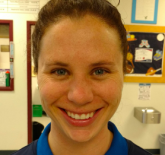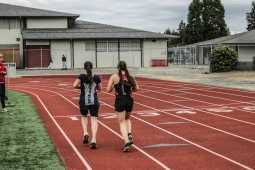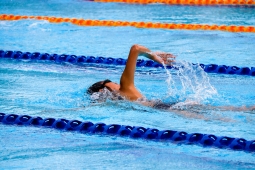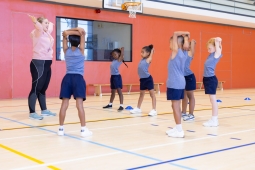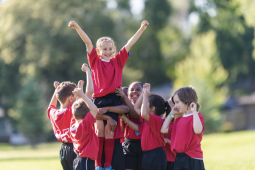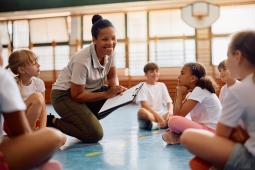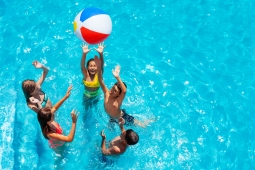Pleins feux sur les jeux à risque
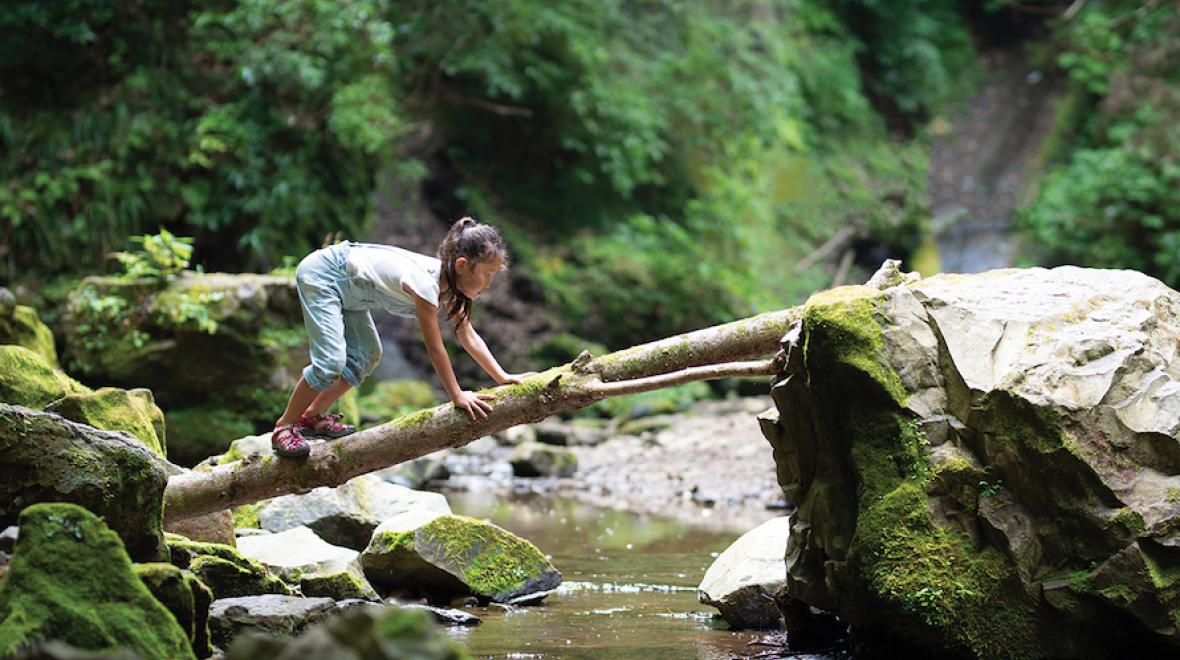
Publié précédemment dans le volume 81, numéro 3
Picture children running through a half-cut soccer field, shoeless, smiling and chasing a partially inflated soccer ball. Nearby, children climb a tree as high as they can, then dangle by their knees from a large branch. One child runs to a bicycle and invites his friend to double up with him as they set off to catch shrimp by hand at the river, while three girls use palm trees as boundary markers for a game of shoot-out soccer.
All of these situations were a common sight over the two weeks we spent in a small village in Belize, as part of a service-learning course through St. Francis Xavier University in Antigonish, Nova Scotia. The question we continued to ask ourselves as we witnessed and joined in this play:
Why aren’t our Canadian students and children engaging in this kind of play, as naturally?
Safer playgrounds, less active kids
Is your school’s playground fun? Does your school even have a playground? What are kids doing at recess? What are they allowed to do? Many school playgrounds have been remodeled or removed altogether in the name of student safety. School grounds are looking increasingly bare as the fear of injury is managed through rigorous risk assessments. Unfortunately, a side effect of safer playgrounds is less active kids. The 2015 Participaction Report Card on Physical Activity for Children and Youth in which Canadian children are graded D- for overall physical activity highlights a problem with over-supervised playtime: “three to five year old kids are less likely to be active on playgrounds that are designed to be safer, because many kids equate less challenging with boring” (Participaction, 2015). This begs the question: Are scraped knees and risky play actually better for kids?
First impressions in Belize
In July 2015, we were part of a group of BEd and MEd teachers participating in an international community programming course through St. Francis Xavier University. Through service learning, the course enabled pre-service and in-service teachers to work with children and youth in a developing nation. We were tasked with planning an excursion to a rural community in Belize and leading various educational programs related to a number of concepts, including physical literacy, wellness and play. Our preconceptions of the culture, lifestyle and students’ abilities were a long way from reality. The term risky play does not exist in Belize; it is simply play.
Crisp unit plans in hand, we entered the school grounds. Half-built cinder block walls surrounded the grounds where various school buildings stood, including one that doubles as the village hurricane shelter. The rest of the grounds were scattered with trees (some standing and some toppled), wooden teeter totters and tree houses, a small concrete basketball pad, piles of sand and several feet of steel rebar lying around. If you crossed the log spanning a ditch at the back end of the school, you’d enter a partially mowed soccer field. We discovered this was also the home of many red ants, the battlegrounds for local canines and the best climbing tree in the village. It was a teaching environment unlike any we had ever experienced. Under these circumstances, we imagined the first day would be filled with student casualties. Surely someone was going to hit their head on something, fall out of a tree, or be impaled by rebar. We wondered how the school and community would allow their children to play in these conditions.
However, during ten days of programming with an average of 50 kids on the grounds each day, we used first aid just once, addressing a minor cut on a child’s foot. Where were all the injuries? Why weren’t there more broken bones or parents calling to complain about the state of the playground? We came to the realization that the Belizean community had no concept of risky play. To them, play is risky.
Team member observations
We started taking note of the differences in types of play compared to our experiences with Canadian school children. Below are observations from several members of the team.
“It was common to see a kid on a bike with their friend or sibling riding on the handlebars. When my mind started to wonder about the consequences of them not wearing helmets, I noticed the two-foot long machete wedged in the bike frame. The concern for helmets seemed irrelevant.” – Ollie Jupp
“We were running a session on basic gymnastic skills and the lesson quickly turned to the kids teaching us. They showed us how to do a partner backflip and a risky group pyramid. One kid was doing round-off back tucks. And this was without any formal training or gym mats!” – Andrew Himmelman
“Boundaries were minimal for Belizean children. As long as they did not have chores to attend to around the house, they could generally go and play where they wanted. Kids were biking down the highway to swim in the river unsupervised. They were in the trees and playing games in the jungle. The main rule was to be back home before dark.” – Tracy MacKay
The upside to risk
How do kids benefit from risky play? The ParticipACTION report states that “kids with ready access to unsupervised outdoor play have better-developed motor skills, social behaviour, independence and conflict resolution skills” (2015).
There will always be kids that require a little more “management,” but in general we observed in Belize the risky play benefits suggested in the ParticipACTION report. We were pleasantly surprised by the proficiency of fundamental movement skills and physical literacy in the Belizean students. Compared to Canadian students, Belizean children have better balance and co-ordination and are better able to synthesize new physical skills in general. It was quickly apparent that we could teach a fundamental movement skill and most students could move towards mastery at a much faster rate than students back home. There was a deficiency in strategic awareness, though, most likely due to the minimal opportunities for organized sports outside of pick-up games of soccer.
While we are cognizant of the importance of risk management when children are active, our time in Belize immersed in the play environment of local children was strong evidence that we need to bring back some elements of healthy risk in the daily lives of Canadian students. Trees, nature’s original jungle gym, are a great place to start. The games and activities that had the fewest rules and guidelines were the ones enjoyed most by the students we taught in Belize. They even shared some small games they had created on their own, using minimal equipment and rules.
An abundance of caution
Active play provides many health and social benefits for kids, and creative and natural play settings provide stimuli for active children. As the ParticipACTION report notes: “we need to consider the possibility that rules and regulations designed to prevent injuries and reduce perceived liability consequences have become excessive, to the extent that they actually limit rather than promote children’s physical activity and health. Adults need to get out of the way and let kids play.”
Challenge the norm
Our experiences in Belize gave us real evidence of the importance and benefits of play in outdoor settings. We left with the motivation to challenge what most of us had accepted as the norm on our playgrounds and communities. We are now driven to encourage our students and children to experience the natural play they so deserve and need. Given the benefits of outdoor “risky” play, we also encourage teachers and parents to consider how they can make a positive change in their schools and communities.
References
Participaction, (2015). The biggest risk is keeping kids indoors. Toronto, CAN: ParticipACTION. Retrieved from http://www.participaction.com/wp-content/uploads/2015/03/2015-Report-Card-Full-Report-EN-FINAL.pdf

